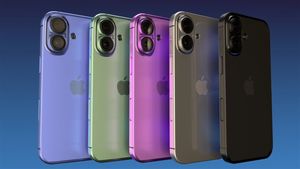Positive top-line results from Phase 3 PALISADE-2 trial of rapid-onset fasedienol (PH94B) nasal spray in social anxiety disorder (SAD)
Itruvone (PH10) nasal spray now staged for Phase 2B clinical development as a stand-alone, non-systemic treatment for major depressive disorder (MDD)
Positive exploratory Phase 2A trial of PH80 nasal spray provides new optimism for the acute treatment of moderate to severe vasomotor symptoms (hot flashes) in women due to menopause
Vistagen (Nasdaq: VTGN), a late clinical-stage biopharmaceutical company aiming to transform the treatment landscape for individuals living with anxiety, depression, and other central nervous system (CNS) disorders, today provided a corporate update and reported financial results for its fiscal year 2024 first quarter ended June 30, 2023.
This press release features multimedia. View the full release here: https://www.businesswire.com/news/home/20230810272661/en/
"The positive outcome of our PALISADE-2 study demonstrated that fasedienol significantly reduced the mean Subjective Units of Distress Scale score, reducing anxiety during a stressful public speaking challenge. The study outcome is a pivotal achievement for fasedienol and our diverse pherine platform. These results mark the first positive U.S. Phase 3 study of an investigational therapy for social anxiety disorder in over 15 years,” said Shawn Singh, Chief Executive Officer of Vistagen. “We believe these results reinforce the promise of our pherine pipeline to address growing unmet treatment needs. We now move forward confidently advancing the Phase 3 program for fasedienol in SAD with planning for initiation of additional Phase 3 studies in 2024.”
"Our strong understanding of each pherine product candidate's scientific and therapeutic potential gives us confidence in our ability to continue to innovate for patients and deliver long-term value for shareholders. With a collective body of positive safety and efficacy studies supporting our clinical-stage pipeline, we believe there are many strategic paths to accelerate our progress in achieving key clinical and regulatory milestones for each program over the next 12 months," said Mr. Singh.
Corporate Update
Positive Phase 3 PALISADE-2 study of fasedienol yields statistically significant top-line results for the acute treatment of anxiety in adults with SAD.
The Company’s Phase 3 PALISADE-2 trial (n=141) met its primary efficacy endpoint, the difference in mean Subjective Units of Distress Scale (SUDS) score during the public speaking challenge at baseline (Visit 2) and treatment (Visit 3) for patients who received fasedienol (n=70) versus placebo (n=71) at Visit 3. Fasedienol-treated patients demonstrated a statistically significant greater change in mean SUDS score (least-squares (LS) mean = -13.8) compared to placebo (LS mean = -8.0), for a difference between groups of -5.8 (p=0.015).
The trial also met its secondary endpoint, demonstrating a statistically significant difference in the proportion of clinician-assessed responders between fasedienol and placebo as measured by the Clinical Global Impressions Improvement (CGI-I) scale. Responders were identified as those who were rated ‘very much less anxious’ or ‘much less anxious’ with 37.7% (n=70) of fasedienol-treated patients rated as responders, as compared to 21.4% (n=71) of those treated with placebo (p=0.033).
Additionally, the trial met the important exploratory endpoint of the difference in the proportion of patient-assessed responders between fasedienol and placebo as measured by the Patient’s Global Impression of Change (PGI-C) scale. Responders were identified as those who self-rated ‘very much less anxious’ or ‘much less anxious’ with 40.6% (n=70) of fasedienol-treated patients rated as responders, as compared to 18.6% (n=71) of those treated with placebo (p=0.003).
Finally, the trial also met the exploratory endpoint of the difference in the proportion of patients in each treatment group with a 20-point improvement in patient-assessed SUDS score from baseline (Visit 2) to treatment (Visit 3). Of the fasedienol-treated patients, 35.7% (n=70) demonstrated this statistically significant and clinically meaningful improvement in SUDS score, as compared to 18.6% (n=71) in the placebo-treated group (p=0.020).
Fasedienol was observed to be well-tolerated with no severe or serious adverse events (AEs) reported. All treatment-emergent AEs reported for the overall study were mild or moderate. There were no AEs reported in the fasedienol treatment arm above 2% occurrence.
Fasedienol is a rapid-onset investigational neuroactive nasal spray with a proposed rapid-onset, non-systemic mechanism of action that sets it apart from all currently approved anti-anxiety medications.
Phase 3 PALISADE-3 study of fasedienol for the acute treatment of anxiety in adults with SAD.
Based on the positive top-line results of the Phase 3 PALISADE-2 study, we are currently preparing for our Phase 3 PALISADE-3 trial, with potential to initiate the trial during the first half of calendar 2024. Like PALISADE-2, PALISADE-3 will be designed as a U.S. multi-center, randomized, double-blind, placebo-controlled, Phase 3 clinical study to evaluate the efficacy, safety, and tolerability of the acute administration of fasedienol to relieve anxiety symptoms in adult patients with SAD during a simulated anxiety-provoking public speaking challenge, as measured using the patient-reported SUDS as the primary efficacy endpoint.
Preparations for Phase 3 FEARLESS Program in SAD underway after positive U.S. Food and Drug Administration (FDA) feedback on use of Liebowitz Social Anxiety Scale (LSAS) as a primary efficacy endpoint in a Phase 3 real-world study.
To complement our PALISADE Phase 3 Program for fasedienol in SAD, the Company is currently preparing for its Phase 3 FEARLESS trial, with potential to initiate the trial in the second half of calendar 2024 with a study design similar to the registration trials for the three drugs currently approved for the treatment of SAD using the LSAS as the primary efficacy endpoint. Accordingly, FEARLESS will be designed as a randomized, double-blind, placebo-controlled Phase 3 trial of fasedienol in adults with SAD to evaluate the efficacy, safety and tolerability of multiple administrations of fasedienol, on a patient-tailored as-needed basis, up to six times per day in their daily lives, in a real-world setting over a multiple week period. To complement the positive results of PALISADE-2, we believe the Phase 3 FEARLESS study design also will align with the way SAD patients will use fasedienol in their daily lives, should it be approved, because our planned fasedienol treatment model includes both repeated experiences of acute reduction of anxiety during performance and social events, evidenced by decreased SUDS scores as in PALISADE-2, as well as longer-term overall reduction in severity of SAD evidenced by reductions in LSAS scores, as will be assessed in FEARLESS.
The Company believes that each of PALISADE-3 and FEARLESS has the potential to complement PALISADE-2 as a potential New Drug Application (NDA)-enabling adequate and well-controlled Phase 3 clinical trial of fasedienol for treatment of SAD.
Successful U.S. Phase 1 study of itruvone stages Phase 2B development in MDD.
Results from the successful U.S. Phase 1 trial of itruvone nasal spray build on successful Phase 1 studies and a positive randomized, double-blind, placebo-controlled Phase 2A study of itruvone in MDD previously conducted in Mexico and enable Phase 2B development of itruvone in the U.S. as an innovative stand-alone rapid-onset pherine product candidate for treatment of MDD. The U.S. Phase 1 trial was a randomized, double-blind, placebo-controlled clinical study investigating the safety and tolerability of a single dose and of multiple doses of itruvone nasal spray in healthy adult subjects. There were no reported serious AEs or discontinuations due to AEs in the study. Overall, itruvone nasal spray was well-tolerated and demonstrated a favorable safety profile, consistent with all prior clinical studies of itruvone.
Newly reported preclinical data for itruvone nasal spray support potential antidepressant activity via peripheral nasal neurons without entry into the brain.
Recently reported preclinical data of radiolabeled intranasal itruvone in laboratory rats further validate its potential to treat MDD without systemic absorption. These new data additionally support the proposed mechanism of action of itruvone nasal spray as binding to receptors of peripheral chemosensory neurons in the nasal cavity but not to neuronal receptors in the brain, thereby limiting the transport of molecules to the circulatory system and minimizing potential systemic exposure. The preclinical data further the substantial body of evidence supporting itruvone’s favorable safety profile.
Positive exploratory Phase 2A trial of PH80 nasal spray provides new optimism for the acute treatment of moderate to severe vasomotor symptoms (hot flashes) in women due to menopause.
In a previously unreported randomized, double-blind, placebo-controlled exploratory Phase 2A clinical study of PH80 designed to explore the efficacy, safety, and tolerability of PH80 for the acute management of menopausal hot flashes in women, PH80 induced significant reduction in the daily number of hot flashes compared to placebo at the end of the first week of treatment, and the improvement was maintained through each treatment week until the end of the treatment period. At baseline, subjects reported a mean daily number of hot flashes of 7.7 (PH80, n=18) and 8.0 (placebo, n=18). After one week of treatment, the number of hot flashes dropped to 2.8 (PH80) and 6.4 (placebo) (p<.001), and after four weeks of treatment, the number of hot flashes dropped to 1.5 (PH80) and 5.1 (placebo) (p<.001). PH80 treatment also significantly reduced the severity, disruption in function and sweating related to hot flashes during the treatment period as compared with placebo. PH80 was well-tolerated with no serious AEs, and the AE profiles were comparable between PH80 and placebo. All 36 subjects completed four weeks of treatment and no subject discontinued participation in the study as a result of AEs.
Fiscal Year 2024 First Quarter Financial Results
Research and development (R&D) expense: Research and development expense decreased by approximately $11.1 million, from $15.3 million to $4.2 million for the quarter ended June 30, 2022 and 2023, respectively. The decrease in R&D expense is primarily due to completing our initial Phase 3 PALISADE Program studies in SAD and the exploratory Phase 2A study in adjustment disorder, as well as reduced nonclinical development and outsourced manufacturing and regulatory activities for fasedienol and itruvone.
General and administrative (G&A) expense: General and administrative expense decreased by approximately $1.8 million from $4.8 million for the quarter ended June 20, 2022, to $3.0 million for the quarter ended June 30, 2023, primarily due to the termination of pre-commercialization activities in August 2022.
Net loss: Net loss attributable to common stockholders for the first quarter ended June 30, 2023, was approximately $6.9 million compared to a Net Loss of $19.8 million for June 30, 2022.
Cash position: At June 30, 2023, the Company had cash and cash equivalents of approximately $9.6 million. Since June 30, 2023 and through August 10, 2023, the Company sold and settled an aggregate of 1,487,293 shares of common stock under its Sales Agreement with Jefferies and received gross cash proceeds of $16,893,700. Additional sales of 1,965,940 shares under the Sales Agreement are expected to settle on or before August 14, 2023, subject to customary settlement procedures, for expected gross cash proceeds of $15,172,023.
As of August 10, 2023, the Company had 9,362,444 shares of common stock outstanding.
Conference Call
Vistagen will host a conference call and live audio webcast this afternoon at 4:30 p.m. Eastern Time to provide a corporate update.
U.S. Dial-in (Toll-Free): 1-800-954-1051
International Dial-in Number (Toll): 1-212-231-2924
Conference ID: 22027732
Webcast Link: https://viavid.webcasts.com/starthere.jsp?ei=1627439&tp_key=9f0f4cb009
A live audio conference call webcast will also be available via the above link. Participants should access this webcast site 10 minutes before the start of the call. In addition, a telephone playback of the call will be available after approximately 8:00 p.m. Eastern Time on Thursday, August 10, 2023. To listen to the replay, call toll-free 1-844-512-2921 within the United States or 1-412-317-6671 when calling internationally (toll). Please use the replay access ID number: 22027732.
About Vistagen
Vistagen (Nasdaq: VTGN) is a late clinical-stage biopharmaceutical company aiming to transform the treatment landscape for individuals living with anxiety, depression and other CNS disorders. Vistagen is advancing therapeutics with the potential to be faster-acting, and with fewer side effects and safety concerns, than those currently available for the treatment of anxiety, depression and multiple CNS disorders. Vistagen's pipeline includes six clinical-stage product candidates, including fasedienol (PH94B), itruvone (PH10), PH15, PH80, and PH284, each an investigational agent belonging to a new class of drugs known as pherines, as well as AV-101, which is an oral prodrug antagonist of the N-methyl-D-aspartate receptor (NMDAR). Pherines are neuroactive nasal sprays designed with an innovative proposed mechanism of action that activates chemosensory neurons in the nasal cavity and can beneficially impact key neural circuits in the brain without systemic absorption or direct activity on neurons in the brain. Vistagen is passionate about transforming mental health care and redefining what is possible in the treatment of anxiety, depression and several other CNS disorders. Connect at www.vistagen.com.
Forward Looking Statements
This press release contains certain forward-looking statements within the meaning of the federal securities laws. These forward-looking statements involve known and unknown risks that are difficult to predict and include all matters that are not historical facts. In some cases, you can identify forward-looking statements by the use of words such as "may," "could," “expect,” “project,” “outlook,” “strategy,” “intend,” “plan,” “seek,” “anticipate,” “believe,” “estimate,” “predict,” “potential,” “strive,” “goal,” “continue,” “likely,” “will,” “would” and variations of these terms and similar expressions, or the negative of these terms or similar expressions. Such forward-looking statements are necessarily based upon estimates and assumptions that, while considered reasonable by Vistagen and its management, are inherently uncertain. As with all pharmaceutical products, there are substantial risks and uncertainties in the process of development and commercialization and actual results or developments may differ materially from those projected or implied in these forward-looking statements. Among other things, there can be no guarantee that any of the Company’s drug candidates will successfully complete ongoing or, if initiated, future clinical trials, receive regulatory approval or be commercially successful, or that the Company will be able to successfully replicate the result of past studies of its product candidates, including fasedienol, itruvone, AV-101 and/or PH80. Other factors that may cause such a difference include, without limitation, risks and uncertainties relating to the Company’s ability to secure adequate financing for its operations, including financing or collaborative support for continued clinical development of the Company’s product candidates; risks and uncertainties related to the Company’s ability to secure successful strategic global and/or regional development and commercialization partnerships; other risks and uncertainties related to delays in launching, conducting and/or completing ongoing and planned clinical trials; the scope and enforceability of the Company’s patents, including patents related to the Company’s pherine drug candidates and AV-101; fluctuating costs of materials and other resources and services required to conduct the Company’s ongoing and/or planned clinical and non-clinical trials; market conditions; the impact of general economic, industry or political conditions in the United States or internationally; and other technical and unexpected hurdles in the development, manufacture and commercialization of the Company’s product candidates. These risks are more fully discussed in the section entitled "Risk Factors" in the Company’s most recent Annual Report on Form 10-K for the fiscal year ended March 31, 2023, and in the Company’s Quarterly Report on Form 10-Q for the period ended June 30, 2023, as well as discussions of potential risks, uncertainties, and other important factors in our other filings with the U.S. Securities and Exchange Commission (SEC). The Company’s SEC filings are available on the SEC’s website at www.sec.gov. You should not place undue reliance on these forward-looking statements, which apply only as of the date of this press release and should not be relied upon as representing the Company’s views as of any subsequent date. The Company explicitly disclaims any obligation to update any forward-looking statements other than as may be required by law. If the Company does update one or more forward-looking statements, no inference should be made that the Company will make additional updates with respect to those or other forward-looking statements.
| VISTAGEN THERAPEUTICS, INC. | |||||||||
| CONSOLIDATED BALANCE SHEETS | |||||||||
| (Amounts in dollars, except share amounts) | |||||||||
June 30, |
March 31, |
||||||||
2023 |
2023 |
||||||||
| (Unaudited) | |||||||||
| ASSETS | |||||||||
| Current assets: | |||||||||
| Cash and cash equivalents | $ |
9,622,300 |
|
$ |
16,637,600 |
|
|||
| Prepaid expenses and other current assets |
|
1,889,400 |
|
|
802,700 |
|
|||
| Deferred contract acquisition costs - current portion |
|
67,100 |
|
|
67,100 |
|
|||
| Total current assets |
|
11,578,800 |
|
|
17,507,400 |
|
|||
| Property and equipment, net |
|
475,800 |
|
|
507,300 |
|
|||
| Right-of-use asset - operating lease |
|
2,153,800 |
|
|
2,260,300 |
|
|||
| Deferred offering costs |
|
522,100 |
|
|
495,700 |
|
|||
| Deferred contract acquisition costs - non-current portion |
|
200,900 |
|
|
217,600 |
|
|||
| Security deposits |
|
100,900 |
|
|
100,900 |
|
|||
| Total assets | $ |
15,032,300 |
|
$ |
21,089,200 |
|
|||
| LIABILITIES AND STOCKHOLDERS’ EQUITY | |||||||||
| Current liabilities: | |||||||||
| Accounts payable | $ |
1,623,200 |
|
$ |
2,473,100 |
|
|||
| Accrued expenses |
|
424,700 |
|
|
787,400 |
|
|||
| Note payable |
|
784,200 |
|
|
105,300 |
|
|||
| Deferred revenue - current portion |
|
714,300 |
|
|
714,300 |
|
|||
| Operating lease obligation - current portion |
|
501,100 |
|
|
485,600 |
|
|||
| Financing lease obligation - current portion |
|
1,700 |
|
|
1,700 |
|
|||
| Total current liabilities |
|
4,049,200 |
|
|
4,567,400 |
|
|||
| Non-current liabilities: | |||||||||
| Deferred revenue - non-current portion |
|
2,137,000 |
|
|
2,314,600 |
|
|||
| Operating lease obligation - non-current portion |
|
1,990,100 |
|
|
2,119,800 |
|
|||
| Financing lease obligation - non-current portion |
|
7,000 |
|
|
7,400 |
|
|||
| Total non-current liabilities |
|
4,134,100 |
|
|
4,441,800 |
|
|||
| Total liabilities |
|
8,183,300 |
|
|
9,009,200 |
|
|||
| Commitments and contingencies | |||||||||
| Stockholders’ equity: | |||||||||
| Preferred stock, $0.001 par value; 10,000,000 shares authorized at June 30, 2023 and March 31, 2023: | |||||||||
| no shares outstanding at June 30, 2023 and March 31, 2023 |
|
- |
|
|
- |
|
|||
| Common stock, $0.001 par value; 325,000,000 shares authorized at June 30, 2023 and March 31, 2023; | |||||||||
| 7,879,673 and 7,315,583 shares issued at June 30, 2023 and March 31, 2023, respectively |
|
7,900 |
|
|
7,300 |
|
|||
| Additional paid-in capital |
|
344,564,000 |
|
|
342,892,500 |
|
|||
| Treasury stock, at cost, 4,522 shares of common stock held at June 30, 2023 and March 31, 2023 |
|
(3,968,100 |
) |
|
(3,968,100 |
) |
|||
| Accumulated deficit |
|
(333,754,800 |
) |
|
(326,851,700 |
) |
|||
| Total stockholders’ equity |
|
6,849,000 |
|
|
12,080,000 |
|
|||
| Total liabilities and stockholders’ equity | $ |
15,032,300 |
|
$ |
21,089,200 |
|
|||
| References to common shares and per share amounts have been retroactively restated to reflect the Company’s 1-for-30 reverse stock split of its common stock effective on June 6, 2023. | |||||||||
| VISTAGEN THERAPEUTICS | ||||||||
| CONDENSED CONSOLIDATED STATEMENT OF OPERATIONS | ||||||||
| (Unaudited) | ||||||||
| (Amounts in Dollars, except share amounts) | ||||||||
| Three Months Ended June 30, | ||||||||
2023 |
2022 |
|||||||
| Revenues: | ||||||||
| Sublicense revenue | $ |
177,600 |
|
$ |
310,100 |
|
||
| Total revenues |
|
177,600 |
|
|
310,100 |
|
||
| Operating expenses: | ||||||||
| Research and development |
|
4,197,200 |
|
|
15,291,400 |
|
||
| General and administrative |
|
2,978,200 |
|
|
4,791,800 |
|
||
| Total operating expenses |
|
7,175,400 |
|
|
20,083,200 |
|
||
| Loss from operations |
|
(6,997,800 |
) |
|
(19,773,100 |
) |
||
| Other income, net: | ||||||||
| Interest income, net |
|
97,200 |
|
|
2,300 |
|
||
| Loss before income taxes |
|
(6,900,600 |
) |
|
(19,770,800 |
) |
||
| Income taxes |
|
(2,500 |
) |
|
(5,500 |
) |
||
| Net loss and comprehensive loss | $ |
(6,903,100 |
) |
$ |
(19,776,300 |
) |
||
| Basic and diluted net loss | $ |
(0.94 |
) |
$ |
(2.87 |
) |
||
| Weighted average shares used in computing basic and diluted net loss |
|
7,377,005 |
|
|
6,886,736 |
|
||
| References to common shares and per share amounts have been retroactively restated to reflect the Company’s 1-for-30 reverse stock split of its common stock effective on June 6, 2023. | ||||||||
View source version on businesswire.com: https://www.businesswire.com/news/home/20230810272661/en/
Contacts
Investors:
Mark McPartland
Senior Vice President, Investor Relations
(650) 577-3606
markmcp@vistagen.com
Media:
Nate Hitchings
SKDK
nhitchings@skdknick.com





